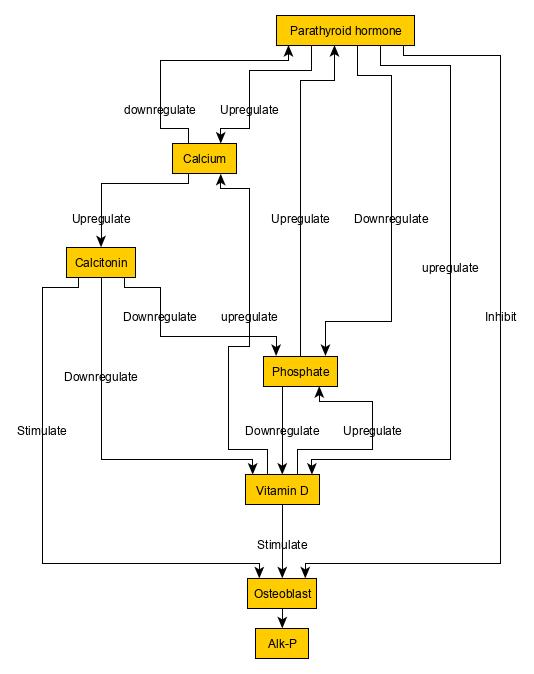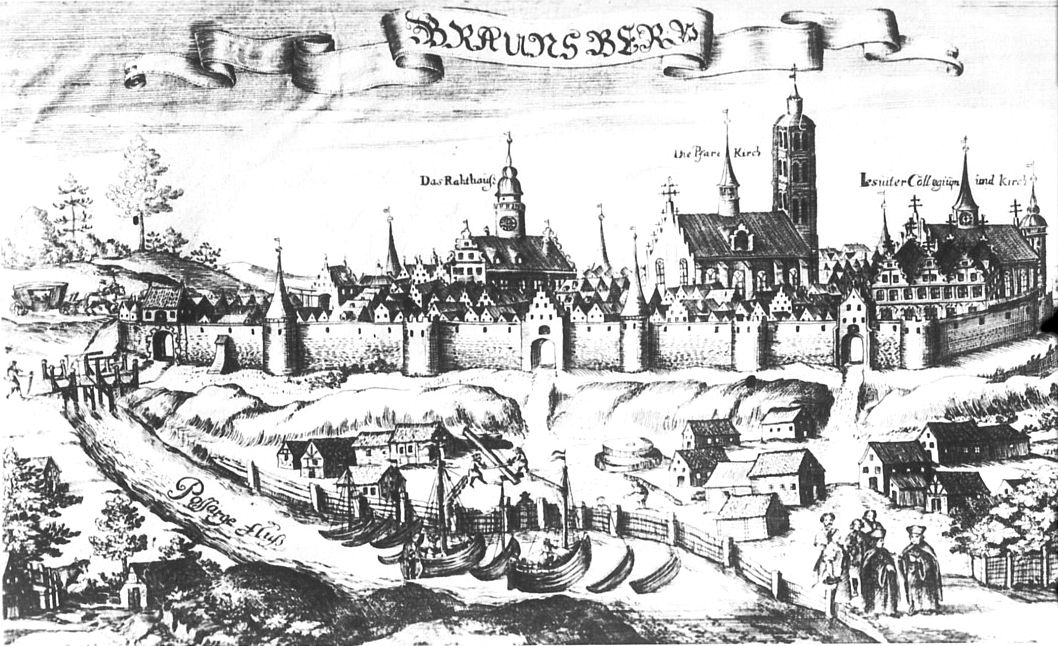|
Friedrich Daniel Von Recklinghausen
Friedrich Daniel von Recklinghausen (; December 2, 1833 – August 26, 1910) was a German pathologist born in Gütersloh, Westphalia. He was the father of physiologist Heinrich von Recklinghausen (1867–1942). Early life Recklinghausen was born in Gütersloh, Germany, in 1833. He was the son of Friedrich Christoph von Recklinghausen and Friederike Charlotte Zumwinkel. His father was an elementary school teacher and a sexton. His mother died shortly after his birth in 1833. The Recklinghausens were a patrician family who put multiple councilors and mayors in their positions. He went to the elementary school where his father taught in Gütersloh. He then attended high school at Ratsgymnasium, Bielefeld. Academic background Starting in 1852, Recklinghausen studied medicine at the Universities of Bonn, Würzburg, and Berlin, earning his doctorate at the latter institution in 1855. Afterwards he studied pathological anatomy under Rudolf Virchow, the father of modern pathology, a ... [...More Info...] [...Related Items...] OR: [Wikipedia] [Google] [Baidu] |
Gütersloh
Gütersloh () is a city in North Rhine-Westphalia, Germany, in the area of Westphalia and the administrative region of Detmold. Gütersloh is the administrative centre for a district of the same name and has a population of 100,194 people. Geography Gütersloh lies in the Emssandebene, south-west of the Teutoburg Forest and on the north-eastern edge of the Westphalian Basin and has no significant points of elevation. The city's lowest point is above sea level on the river Ems near the Princess Royal Barracks and the highest point is above sea level in the eastern township of Friedrichsdorf. The border to Rheda-Wiedenbrück extends as part of the Rhedaer Forest, a large wooded area with predominantly conifers. The river Dalke flows through the city from east to west, crossing close to the Stadt Park as well as the city centre and river Ems. Gütersloh railway station is on the Hamm–Minden line. History The then-official district of Gütersloh included ... [...More Info...] [...Related Items...] OR: [Wikipedia] [Google] [Baidu] |
Pathological Anatomy
Anatomical pathology (''Commonwealth'') or Anatomic pathology (''U.S.'') is a medical specialty that is concerned with the diagnosis of disease based on the macroscopic, microscopic, biochemical, immunologic and molecular examination of organs and tissues. Over the last century, surgical pathology has evolved tremendously: from historical examination of whole bodies (autopsy) to a more modernized practice, centered on the diagnosis and prognosis of cancer to guide treatment decision-making in oncology. Its modern founder was the Italian scientist Giovan Battista Morgagni from Forlì. Anatomical pathology is one of two branches of pathology, the other being clinical pathology, the diagnosis of disease through the laboratory analysis of bodily fluids or tissues. Often, pathologists practice both anatomical and clinical pathology, a combination known as general pathology. Similar specialties exist in veterinary pathology. Differences with clinical pathology Anatomic pa ... [...More Info...] [...Related Items...] OR: [Wikipedia] [Google] [Baidu] |
Robert William Smith (surgeon)
Robert William Smith MD FRCSI MRIA (12 October 1807 in Dublin – 28 October 1873) was an Irish surgeon and pathologist who described Smith's fracture in his 1847 book, the first important book on fractures by an Irish author. Biography Smith studied medicine in his native Dublin and he was apprenticed to Richard Carmichael, and he studied professionally in the RCSI Medical School, Trinity College, the Richmond Hospital Schools, and in the House of Industry Hospitals. Smith received his Licentiate of the Royal College of Surgeons in Ireland (RCSI) in 1832. He was awarded his MD from Trinity College, Dublin in 1842, and became a Fellow of the Royal College of Surgeons in Ireland (RCSI) in 1844. He became the first Professor of Surgery at Trinity College in 1847, and a member of the Royal Irish Academy in 1849. He worked as surgeon to the Hospital for the Mentally Ill, Sir Patrick Dun's Hospital and he taught surgery and forensic medicine at the Richmond Hospital. He co-fo ... [...More Info...] [...Related Items...] OR: [Wikipedia] [Google] [Baidu] |
Pyaemia
Pyaemia (or pyemia) is a type of sepsis that leads to widespread abscesses of a metastatic nature. It is usually caused by the staphylococcus bacteria by pus-forming organisms in the blood. Apart from the distinctive abscesses, pyaemia exhibits the same symptoms as other forms of septicaemia. It was almost universally fatal before the introduction of antibiotics. Sir William Osler included a three-page discussion of pyaemia in his textbook '' The Principles and Practice of Medicine'', published in 1892. He defined pyaemia as follows: Earlier still, Ignaz Semmelweis – who later died of the disease – included a section titled "Childbed fever is a variety of pyaemia" in his treatise, ''The Etiology of Childbed Fever'' (1861). Jane Grey Swisshelm, in her autobiography titled ''Half a Century'', describes the treatment of pyaemia in 1862 during the American Civil War. Types *''arterial p.'' Pyaemia resulting from dissemination of emboli from a thrombus in cardiac v ... [...More Info...] [...Related Items...] OR: [Wikipedia] [Google] [Baidu] |
Osteomalacia
Osteomalacia is a disease characterized by the softening of the bones caused by impaired bone metabolism primarily due to inadequate levels of available phosphate, calcium, and vitamin D, or because of resorption of calcium. The impairment of bone metabolism causes inadequate bone mineralization. Osteomalacia in children is known as rickets, and because of this, use of the term "osteomalacia" is often restricted to the milder, adult form of the disease. Signs and symptoms can include diffuse body pains, muscle weakness, and fragility of the bones. In addition to low systemic levels of circulating mineral ions (for example, caused by vitamin D deficiency or renal phosphate wasting) that result in decreased bone and tooth mineralization, accumulation of mineralization-inhibiting proteins and peptides (such as osteopontin and ASARM peptides), and small inhibitory molecules (such as pyrophosphate), can occur in the extracellular matrix of bones and teeth, contributing locally to cause m ... [...More Info...] [...Related Items...] OR: [Wikipedia] [Google] [Baidu] |
Rickets
Rickets is a condition that results in weak or soft bones in children, and is caused by either dietary deficiency or genetic causes. Symptoms include bowed legs, stunted growth, bone pain, large forehead, and trouble sleeping. Complications may include bone deformities, bone pseudofractures and fractures, muscle spasms, or an abnormally curved spine. The most common cause of rickets is a vitamin D deficiency, although hereditary genetic forms also exist. This can result from eating a diet without enough vitamin D, dark skin, too little sun exposure, exclusive breastfeeding without vitamin D supplementation, celiac disease, and certain genetic conditions. Other factors may include not enough calcium or phosphorus. The underlying mechanism involves insufficient calcification of the growth plate. Diagnosis is generally based on blood tests finding a low calcium, low phosphorus, and a high alkaline phosphatase together with X-rays. Prevention for exclusively breastfed babies ... [...More Info...] [...Related Items...] OR: [Wikipedia] [Google] [Baidu] |
Wilhelm Von Waldeyer-Hartz
Heinrich Wilhelm Gottfried von Waldeyer-Hartz (6 October 1836 – 23 January 1921) was a German anatomist, known for summarizing neuron theory and for naming the chromosome. He is also remembered by anatomical structures of the human body which were named after him: Waldeyer's tonsillar ring (the lymphoid tissue ring of the naso- and oropharynx) and Waldeyer's glands (of the eyelids). Contribution to neuron theory Waldeyer's name is associated in neuroscience with the "neuron theory", and for coining the term "neuron" to describe the basic structural unit of the nervous system. Waldeyer synthesized the discoveries by neuroanatomists (and later Nobel Prize winners) Camillo Golgi (1843–1926) and Santiago Ramón y Cajal (1852–1934), who had used the silver nitrate method of staining nerve tissue (Golgi's method), to formulate widely cited reviews of the theory. Waldeyer learned Spanish in order to absorb Cajal's detailed studies using Golgi's method and became his friend, me ... [...More Info...] [...Related Items...] OR: [Wikipedia] [Google] [Baidu] |
Heinrich Jacob Von Recklinghausen
Heinrich von Recklinghausen (17 April 1867 – 12 December 1942) was a German physician and scientist from Würzburg. After receiving his medical doctorate in 1895, he worked as an assistant in several hospitals. In 1902 he moved to Bern, where he worked in the physiological institute of Hugo Kronecker (1839–1914). During World War I he was a military physician in Strasbourg, and afterwards performed scientific research in Heidelberg and Munich. He was the son of the pathologist Friedrich Daniel von Recklinghausen (1833–1910). Recklinghausen is primarily remembered for his study of blood pressure, and contributions made in the science of blood pressure measurement. He is credited for making improvements to Scipione Riva-Rocci's (1863–1937) sphygmomanometer by increasing the size of the pressure cuff from to . During the 1930s he devised an oscillo-tonometer, a device used to measure systolic and diastolic blood pressure. It consisted of a mechanical amplification syste ... [...More Info...] [...Related Items...] OR: [Wikipedia] [Google] [Baidu] |
Braunsberg
Braniewo () (german: Braunsberg in Ostpreußen, la, Brunsberga, Old Prussian: ''Brus'', lt, Prūsa), is a town in northern Poland, in Warmia, in the Warmian-Masurian Voivodeship, with a population of 16,907 as of June 2021. It is the capital of Braniewo County. Braniewo is the second biggest city of Warmia after Olsztyn and one of the historical centers of the region. Location Braniewo lies on the Pasłęka River about 5 km from the Vistula Lagoon, about 35 km northeast of Elbląg and southwest of Kaliningrad ( pl, Królewiec). The Polish border with Russia's Kaliningrad Oblast lies 6 km north, and may be reached from Braniewo via National road 54. History Middle Ages According to the German geographer Johann Friedrich Goldbeck (1748-1812), the town originally was named Brunsberg after Bruno von Schauenburg (1205–1281), bishop of Olomouc in Moravia, who accompanied King Ottokar II of Bohemia in 1254 and 1267 when the latter participated in the crusade ... [...More Info...] [...Related Items...] OR: [Wikipedia] [Google] [Baidu] |
University Of Königsberg
The University of Königsberg (german: Albertus-Universität Königsberg) was the university of Königsberg in East Prussia. It was founded in 1544 as the world's second Protestant academy (after the University of Marburg) by Duke Albert of Prussia, and was commonly known as the Albertina. Following World War II, the city of Königsberg was transferred to the Soviet Union according to the 1945 Potsdam Agreement, and renamed Kaliningrad in 1946. The Albertina was closed and the remaining non-Lithuanian population either executed or expelled, by the terms of the Potsdam Agreement. Today, the Immanuel Kant Baltic Federal University in Kaliningrad claims to maintain the traditions of the Albertina. History Albert, former Grand Master of the Teutonic Knights and first Duke of Prussia since 1525, had purchased a piece of land behind Königsberg Cathedral on the Kneiphof island of the Pregel River from the Samland chapter, where he had an academic gymnasium (school) erected in 154 ... [...More Info...] [...Related Items...] OR: [Wikipedia] [Google] [Baidu] |
Habilitation
Habilitation is the highest university degree, or the procedure by which it is achieved, in many European countries. The candidate fulfills a university's set criteria of excellence in research, teaching and further education, usually including a dissertation. The degree, abbreviated "Dr. habil." (Doctor habilitatus) or "PD" (for "Privatdozent"), is a qualification for professorship in those countries. The conferral is usually accompanied by a lecture to a colloquium as well as a public inaugural lecture. History and etymology The term ''habilitation'' is derived from the Medieval Latin , meaning "to make suitable, to fit", from Classical Latin "fit, proper, skillful". The degree developed in Germany in the seventeenth century (). Initially, habilitation was synonymous with "doctoral qualification". The term became synonymous with "post-doctoral qualification" in Germany in the 19th century "when holding a doctorate seemed no longer sufficient to guarantee a proficient transfer o ... [...More Info...] [...Related Items...] OR: [Wikipedia] [Google] [Baidu] |




